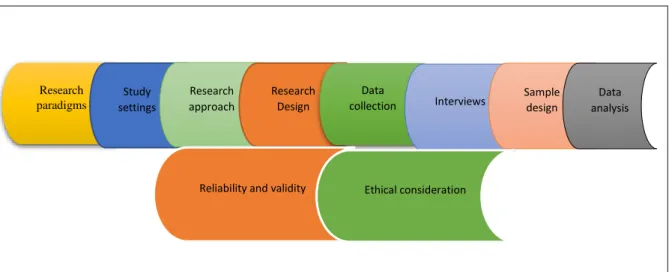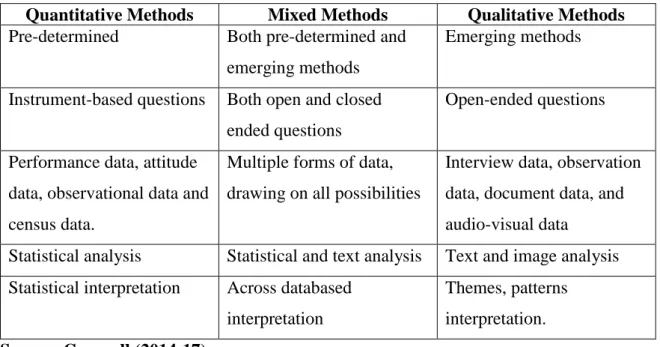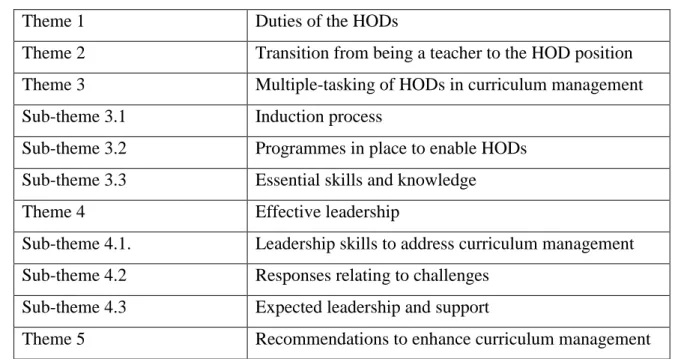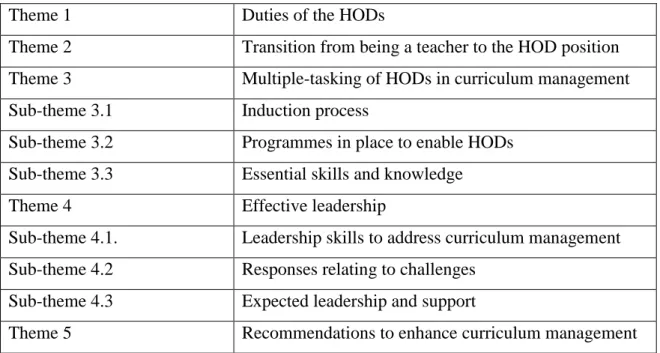To my children, Sifiso and Khanyisile, thank you for your support and for always reminding me that I am your role model. Thank you for not letting me give up on my dreams even when circumstances seemed impossible.
Introduction
The summary of the evaluation was the structure and proposal of curriculum design, introduction, teacher training and development, learning support materials, provincial support for teachers in schools and implementation timeframes (National Education Policy Act, 1996). These guidelines emphasized the principle of integrated learning and achieving an optimal relationship between the integration of learning areas and conceptual progression from grade to grade.
Study Background
It was also reported that training and development differ depending on the needs of each organization and that each organization responds differently depending on the new challenges. The implication is that South African curriculum administrators must be prepared to improve the quality of schools' academic standards.
Motivation for study
In the same vein, then the Kenyan Education Management Capacity Assessment (2010) reported that HODs (middle-level ranks) were unable to translate the vision to senior managers and even the written vision and mission it lacked clarity. In South Africa, Kyahurwa (2013) found that there was less training and workshops for school management and they were demotivated due to lack of support and limited resources to meet the needs of the school.
Focus of the study
In addition, the DoE introduced various education systems over the years and these were difficult to implement in the schools, especially because the teachers were dissatisfied with them.
Problem Statement
Aims and Objectives
Research Questions
Significance of the study
Location of the study
Limitations of the study
Research Methodology
Structure of the Dissertation
The approach that gives an overview of the study is research paradigm, study settings, research approach, research design, data collection, interviews, sample design, data analysis, reliability, validity and ethical consideration. This approach is to ensure that the researcher understands the study from the information provided by participants.
Conclusion
Introduction
The South African curriculum
The Department of Education (2012) states that the above four elements are used for teaching and learning and the diagram outlines the relationship that connects these elements. Moreover, it explains that core elements of curriculum management involve a strategic planning associated with its human and physical assets, as the resources are further related to internal and external environment, thus management moves towards achieving collaborative effective curriculum implementation.
Curriculum management and leadership
Curriculum management is a phrase used by several academics to define leadership and management of the core provision of teaching and learning. For these departments to function, leaders must effectively maintain lasting connections and trust. Therefore, skills and knowledge in teaching and learning are important.
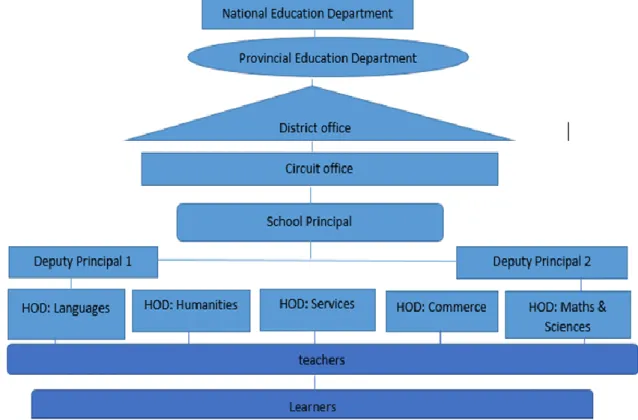
Roles of Head of Department in managing curriculum
Teachers, as professionals, are qualified for appointment to senior management positions and are expected to assume the roles and responsibilities effectively (Tseipobi, 2012). The school management must ensure that the duties and responsibilities of HODs are clearly defined so that they perform these duties accordingly and thus make them accountable.
Challenges facing HODs in secondary schools
Induction and training processes
Adequate skills and knowledge are critical for teachers to successfully implement the new curriculum (Mncube, Thaanyane & Mabunda, 2013). Considering the skills and knowledge of the HODs, it is evident that there was a lack of curriculum knowledge and/or subject knowledge related to the subjects they lead.
Management support
Consequently, Jaca (2013) agrees with Katz (1955) about the lack of curriculum knowledge of HODs, which has an impact on the teachers who need the support of a specialist in the subjects they teach. Therefore, teachers must develop competence in teaching and learning because initial teacher training cannot provide the teachers with lifelong skills and knowledge required by their profession (Kyahurwa, 2013).
Leadership traits and attributes
- Leadership traits for the HOD position
- Situation leadership
- Autocratic leadership style
- Bureaucratic leadership style
- Charismatic leadership style
- Democratic leadership style
- Transactional leadership style
- Transformational leadership style
- Theory of curriculum management
This type of leadership promotes responsibility and reliability, as the momentum of the style is i. Transactional leaders define the organization's objectives, and they effectively assign and explain responsibilities. The transformational leadership style encourages employees to be part of and achieve organizational goals by illustrating a future perspective of the organization.
Conclusion
The purpose of a system's curriculum is to specify what favorable student outcomes should be achieved, how it should be taught, and what should be taught (Department of Education, 2012).
Introduction
Research paradigms
Interpretivism
The researcher's responsibility in this regard is to understand, interpret, report the collected data about the views of the people being studied. Therefore, the interpretive paradigm consents to researchers seeing the world through the insights and practices of the participants. This study adopted the interpretive paradigm because of its methodological assumption, which enables the study to explore the roles of HODs in the management of the curriculum.
Positivism paradigm
Hermeneutics interprets people's theory and method, while phenomenology focuses on the way people make meaning of the environment around them. In search of the answers for research, the researcher following the interpretive paradigm used those experiences to construct and interpret her understanding based on collected data. Therefore, the final presentation of the data includes participant transcription, researcher reflexivity, a complex description and interpretation of the problem and its contribution to the literature or a call for change (Creswell, 2014).
Research approach
Du Plooy-Cilliers, et al. 2014) states that positivism assumes that science can inform individuals about the method to make the environment they live in a better place, so they believe that people can change their world by educating themselves. Therefore, positivism is concerned with the accuracy and repeatability of research, the reliability of observation, and the generalizability of findings.
Study Setting
Quantitative research
Qualitative research
Mixed method
Research Design
Primary data: face to face interviews
The researcher conducted personal interviews with the respondents and established the protocol for recording and taking interview notes. The main advantage of the personal interviews was that the researcher was able to clarify unclear information and ensure that the data collection was clearly understood. This was done by repeating the questions and rephrasing the questions (Appendix 1). The researcher used open-ended interview questions (Appendix 1) to interview 15 respondents for this study, generating themes and subthemes.
Secondary data
Managers who experience challenges have an opportunity to express their frustration and can suggest how they can be assisted so that they perform to the best of their abilities (Sekaran & Bougie, 2013). Open-ended questions were asked which were limited in number, which planned to elicit understanding and opinions from the participants allowing them to state their views freely (Creswell, 2014; Sekaran . & Bougie, 2013).
Sampling design
Population of the study
Sampling
Data Analysis
Reliability and validity
In order for the study to be reliable, the researcher records the interviews while making notes at the same time, in case the recordings fail. Additionally, written notes are kept during data collection to establish confirmability and all steps are taken to confirm transparency in order to establish trustworthiness (Cope, 2014). Qualitative research also considers internal and external validity, so this is done by the researcher to establish credibility, therefore data collection requires the demographics of the respondents to be included (Cope, 2014; Yilmaz, 2013).
Ethical considerations
Respondents volunteered to participate in the study, signing the informed consent form (see Appendix 1). During the interview processes, the researcher did not influence the respondents in any way, except by asking for clarity and elaboration on certain issues.
Conclusion
Introduction
Themes and sub-themes
- Theme 1: Duties of HODs
- Theme 2: Transition from being a teacher to the HOD position
- Theme 3: Multiple-tasking of HODs in curriculum management
- Sub-theme 3.1: Induction process
- Sub-theme 3.2: Programmes in place to enable HODs
- Sub-theme 3.3: Essential skills and knowledge
- Theme 4: Effective leadership
- Sub-theme 4.1: Leadership training to address curriculum management
- Sub-theme 4.2: Responses relating to challenges
- Sub-theme 4.3: Expected leadership and support
- Theme 5: Recommendations to enhance curriculum management
They must have a good command of the subject and be willing to explore teaching methods for effective teaching. Respondents were of the view that HODs must attend training development workshops and drew attention to DoE expectations. In addition, they must be proficient in understanding and interpreting department policies so that they can share information with the members of their departments.
Conclusion
Introduction
Key Findings
- Duties of HODs
- Transition from being a teacher to the HOD position
- Multiple-tasking of HOD in curriculum management
- Effective leadership
- Recommendations to enhance curriculum management
Jaca (2013) mentioned that the HODs must attend workshops and be trained for their leadership roles so that they are able to develop their teams. The result showed that HODs need to model the implementation of curriculum management so that they would be successful. The results indicated that HODs need to have pedagogical knowledge so that they can demonstrate it to other colleagues.
Conclusion
Furthermore, HODs along with teachers debate the practicality of the targets and communicate them with relevant stakeholders so that proposals are presented to top management. Because of this, the HODs are given a chance to ensure that the school's goals are not undermined but instead are achievable (Sun & Anderson, 2011).
Introduction
Key findings
Objective 1
The study further revealed that lack of resources prevents them from effectively managing the curriculum as expected. The lack of support from parents was also mentioned, while it was also stated that students are entitled but not responsible for their education. Induction and training programs were not enough to equip them for the responsibilities they were expected to carry out.
Objective 2
Furthermore, the study shows that there must be intensive training and development, but it was highlighted that the little we never have is enough or effective to solve their challenges. The results also indicated that not everyone was trained to become an HOD, therefore they relied on experience, previous and existing HODs and from networks with other stakeholders within the DoE.
Objective 3
Heads of Department must attend workshops scheduled by the DoE to improve their skills and knowledge for curriculum management. It was also recommended that they should not wait for the DoE to organize workshops for them, but they can also enroll in any institution of their choice, even online studies, to improve their ability to manage effectively. Networking with other HODs inside and outside their schools is also important because they can share ideas and solve challenges.
Recommendations
- Duties of HODs
- Transition from being a teacher to the HOD position
- Multiple-tasking of HODs in curriculum management
- Programmes in place to enable HODs
- Effective leadership
- Recommendations to enhance curriculum management
It is recommended that HODs should have integrity and be knowledgeable about their roles so that employees under their supervision trust them. It is recommended that HODs should not wait for DoE to train them, instead they should enroll in private institutions so that they can improve their leadership skills. It is recommended that HODs need their own private offices in order to work effectively, as sharing space with new employees may affect their performance.
Recommendations for future research
Conclusion
The impact of induction and mentoring programs for beginning teachers: A critical review of the research. An examination of the issues facing Head of Education in New Zealand secondary school, (Master's thesis). The impact of the curriculum changes in the teaching and learning of science: A case study in under-resourced schools in the Vhembe district.
INFORMED CONSENT LETTER
I………(full names of . participant) hereby confirm that I understand the content of this document and the nature of the research project, and I agree to participate in the research project.
INTERVIEW QUESTIONS
GATEKEEPER’S LETTER
ETHICAL CLEARANCE APPROVAL LETTER
CERTIFICATE OF LANGUAGE EDITING
TURNITIN REPORT

